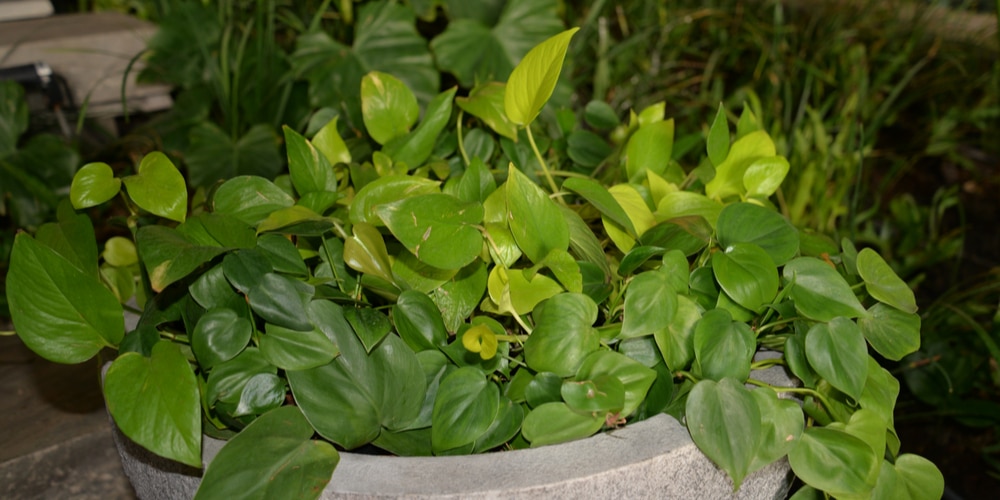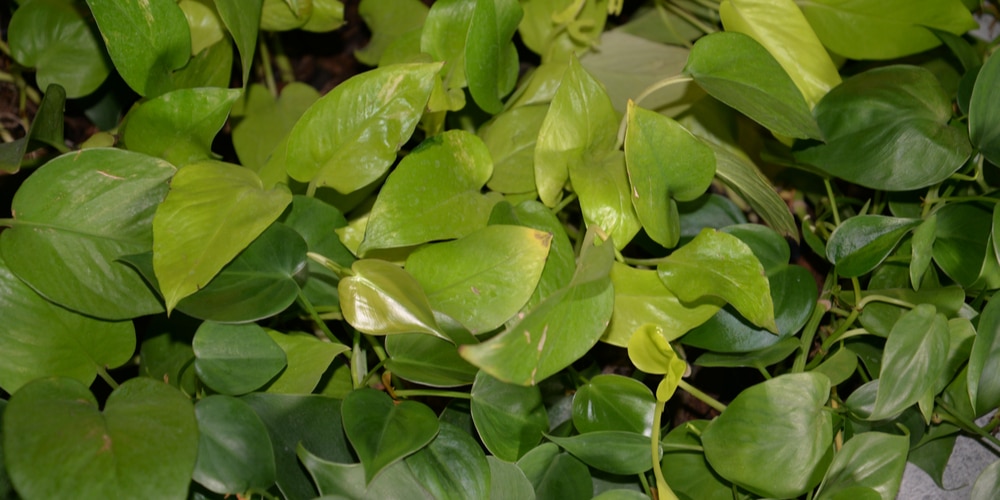Looking for an easy-to-care-for houseplant? Look no further than the spade leaf philodendron! This beautiful plant is perfect for beginners and is very low maintenance. In this article, we will discuss the care and maintenance of the spade leaf philodendron and some common problems that you may encounter. We will also provide tips on how to prevent these problems from occurring. So if you are looking for a low-stress way to add some greenery to your home, the spade leaf philodendron is worth considering!
What Is A Spade Leaf Philodendron?
A spade leaf philodendron is a tropical plant part of the arum family. It is native to Central and South America and can be found in rainforests and other moist environments. This plant has large leaves that are heart-shaped and green with a reddish underside. The flowers are small and white and grow in a spike-like structure (spadix).
Spade Leaf Philodendron Growth and Care
Spade leaf philodendrons thrive in bright light but can also tolerate lower levels of light. It prefers moist soil but can tolerate drier conditions once it is established. This plant does not require a lot of fertilizer and can be propagated by division or stem cuttings.
Sunlight and Temperature
Philodendrons need bright light but not direct sunlight. East- or west-facing windows are good locations. If your philodendron gets too much sun, the leaves will turn yellow.
In the summer, keep your philodendron in temperatures between 65 and 75 degrees Fahrenheit. You can keep it in a cooler location in the winter, between 50 and 60 degrees Fahrenheit.
Spade Leaf Philodendron Growth and Care: Watering
Philodendrons like moist but not wet soil. Water when the top inch of soil feels dry to the touch. Be careful not to overwater your philodendron, as this can cause root rot. You can tell if your plant is getting too much water if the leaves are wilting.
Fertilizing
Feed your philodendron a liquid houseplant fertilizer every other week in the spring and summer. In the fall and winter, fertilize it once a month. Follow the instructions on the package of fertilizer you buy.
Spade Leaf Philodendron Growth and Care: Pruning
Pinch off the tips of the leaves periodically to help your philodendron grow fuller and bushier. You can also cut off dead or wilted leaves at the stem. However, be careful not to damage the healthy leaves.
Humidity
One of the many benefits of having a spade leaf philodendron as your houseplant is that they thrive in humid environments. If you live in an area with dry air, adding a spade leaf to your home can help increase the humidity levels and improve your indoor air quality.
Soil and Potting
When it comes to potting and soil for your spade leaf philodendron, you want to use a well-draining mix that is slightly acidic. You can either make your mix or purchase a premade potting mix from the store. Be sure to avoid using soils with high nitrogen levels, as this can harm your plant.
When potting, use a pot that is only slightly larger than the current size of the root ball. This will help ensure that the plant does not become root-bound and stressed. If you are planting in a container, make sure there are drainage holes in the bottom so excess water can escape.
USDA Climate Zones
This resilient plant can thrive in various conditions, making it the perfect addition to any home. Whether you live in a hot or cold climate, spade leaf philodendron is sure to thrive. It can be grown in USDA Climate Zones nine to eleven.
How To Propagate Spade Leaf Philodendron
One of the great things about spade leaf philodendrons is that they are easy to propagate. You can divide the plant into several clumps and replant them, or you can take stem cuttings.
To propagate a spade leaf philodendron by division:
* Wait until the plant has finished flowering and has produced new growth.
* Use a sharp knife or pruning shears to cut the plant into several clumps, making sure to include at least one leaf and some stem on each clump.
* Replant the clumps in pots filled with moist potting soil.
To propagate a spade leaf philodendron by stem cutting:
* Wait until the plant has produced new growth.
* Cut a stem that is at least six inches long, making sure to include at least one leaf node.
* Remove the leaves from the lower half of the stem and dip them into rooting hormone powder.
* Plant the stem in moist potting soil and keep it in a warm place until it roots.
Both methods of propagating spade leaf philodendrons are very successful, so choose the way that works best for you. In no time at all, you’ll have a beautiful indoor garden filled with these easy-to-grow plants.
What Are The Benefits Of Having A Spade Leaf Philodendron In Your Home Or Office Space?
One of the best benefits of having a spade leaf philodendron in your home or office space is that it’s incredibly low maintenance. This plant doesn’t require a lot of water or light, so it’s perfect for people who don’t have a lot of time to care for their plants.
Another benefit of having a spade leaf philodendron is that it can improve the air quality in your home or office. This plant helps remove toxins from the air, which can benefit people with allergies or asthma.
Finally, spade leaf philodendrons are a great way to add color and life to any space. These plants can grow up to six feet tall, making them a great addition to any room. With their bright green leaves and delicate flowers, spade leaf philodendrons are sure to brighten up any space.
Common Problems With Spade Leaf Philodendrons And How To Solve Them
The spade leaf philodendron is one of the most popular houseplants around. And for a good reason – it’s practically bulletproof! But even the best plants can suffer from a few common problems. Here are some tips on how to solve them:
If your spade leaf philodendron starts wilting, it may not be getting enough water. Be sure to water it thoroughly, making sure the soil is wet down to the bottom of the pot.
If your spade leaf philodendron’s leaves are yellowing, it may not be getting enough light. Move it to a brighter location and increase the amount of light it’s getting.
If your spade leaf philodendron is losing leaves, it may not be getting enough fertilizer. Feed it a diluted solution of liquid houseplant fertilizer every two weeks.
These are just a few common problems with spade leaf philodendrons. But with a little bit of TLC, your plant will be back to its healthy self in no time!
Different Ways To Display Your Spade Leaf Philodendron
Like most people, you probably have a few pots of plants scattered around your house. Maybe some in the kitchen, others in the living room, and more in bedrooms and bathrooms. But what if you want to take your plant game up a notch? What if you want to make your home look like a veritable greenhouse? Well, then you need to start using spade leaf philodendrons in your displays!
There are a few different ways to use spade leaf philodendrons in your displays. You can put them in pots, hang them from the ceiling, or even grow them on a wall. Here are a few ideas:
* Put a spade leaf philodendron in a pot on your kitchen windowsill. The bright light will make it happy, and the proximity to food will make it easy to water.
* Hang a spade leaf philodendron from the ceiling in your living room. This is a great way to add some green to an otherwise dull space.
* Grow a spade leaf philodendron on a wall in your bathroom. This is a great way to add privacy while still enjoying some greenery.
Spade Leaf Philodendron Growth and Care: Final thoughts
If you’re looking for an easy-to-care-for plant that will brighten up any room in your house, look no further than the spade leaf philodendron. This beautiful plant is perfect for beginners, and it doesn’t require a lot of care or attention. So go ahead and add a spade leaf philodendron to your home today! You won’t regret it.


